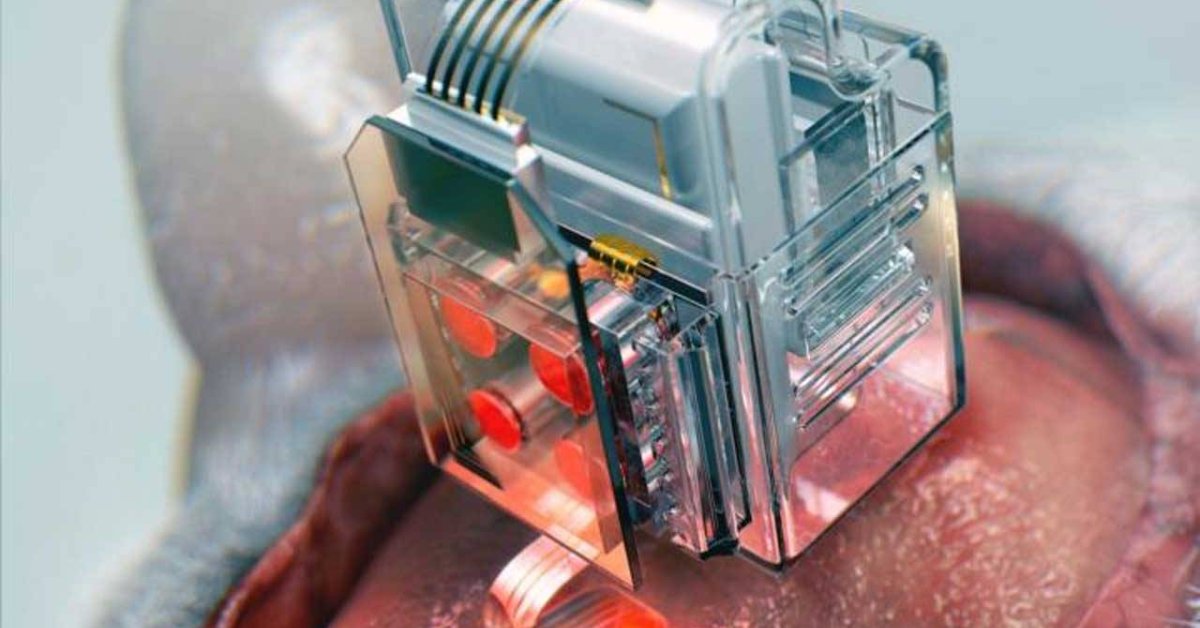This Neural Implant Allows Scientists To Manipulate Human Brain Cells With A Smartphone
Aadhya Khatri - Aug 09, 2019

Scientists have just had a breakthrough in manipulating brain cells with a neural implant and a smartphone, without the risk of patients developing lesions
- IIT-Madras Aims To Interpret Brain Signals Into Language
- Sciencists Explains Why We Often Make Wrong Decisions
- Scientists' Brains Reduce In Size After Spending Over A Year In Antarctica
Scientists have just had a breakthrough in manipulating brain cells with a brain implant and smartphones. The team behind this invention is from the US and Korea. What they made is a soft neural implant that can deliver colored lights and many types of drugs directly to human brain cells. What the scientist hope for it is that the implant can be used to treat Alzheimer’s, Parkinson’s, pain, addiction, and depression.

This implantable device has the ability to control neural circuits, and a human operator can manage it by using a smartphone and Bluetooth Low Energy. The device feature drug cartridge that can be replaced, just like Lego, and can target specific neurons with drugs and lights in an extended period of time. With this new neural implant, scientists now can have optical neuromodulation and chronic chemical that were unachievable with other systems.
With other methods, if scientists want to deliver light therapy and drugs to the brain, they will have to use optical fibers and metal tubes. While these systems do their job well, they limit the movement of the patient and over time, will lead to lesions. The new neural implant is the answer to the problems of these older systems. It does not require complex controls and bulky equipment at all.
Another application of this device is that it may allow scientists to study the same brain circuits for a long time without worrying that the drug may one day runs out, thanks to the replaceable canisters. In their experiments, the team test on mice with an ultrathin and soft probe, with the thickness of human hair.
The tiny LEDs that are even smaller than a grain of salt, coupled with microfluidic channels, enable limitless delivery of drug and light. The team is confident that this invention will provide a new way of treating pain, addiction, or even emotional disorders.
Featured Stories

Features - Jul 01, 2025
What Are The Fastest Passenger Vehicles Ever Created?

Features - Jun 25, 2025
Japan Hydrogen Breakthrough: Scientists Crack the Clean Energy Code with...

ICT News - Jun 25, 2025
AI Intimidation Tactics: CEOs Turn Flawed Technology Into Employee Fear Machine

Review - Jun 25, 2025
Windows 11 Problems: Is Microsoft's "Best" OS Actually Getting Worse?

Features - Jun 22, 2025
Telegram Founder Pavel Durov Plans to Split $14 Billion Fortune Among 106 Children

ICT News - Jun 22, 2025
Neuralink Telepathy Chip Enables Quadriplegic Rob Greiner to Control Games with...

Features - Jun 21, 2025
This Over $100 Bottle Has Nothing But Fresh Air Inside

Features - Jun 18, 2025
Best Mobile VPN Apps for Gaming 2025: Complete Guide

Features - Jun 18, 2025
A Math Formula Tells Us How Long Everything Will Live

Features - Jun 16, 2025
Comments
Sort by Newest | Popular